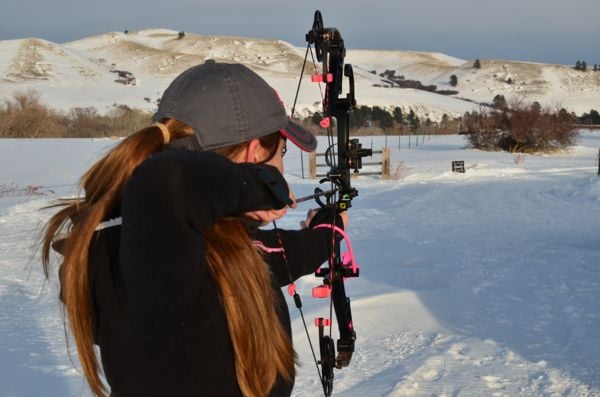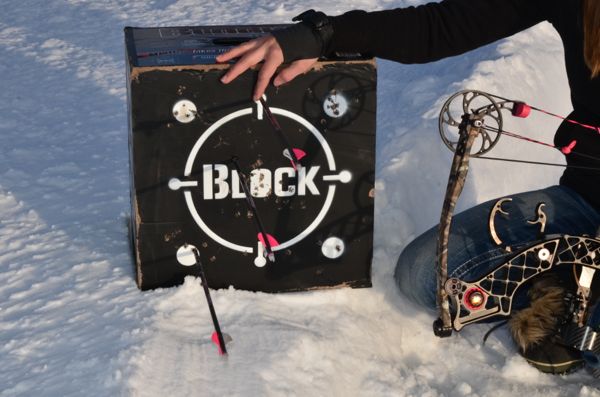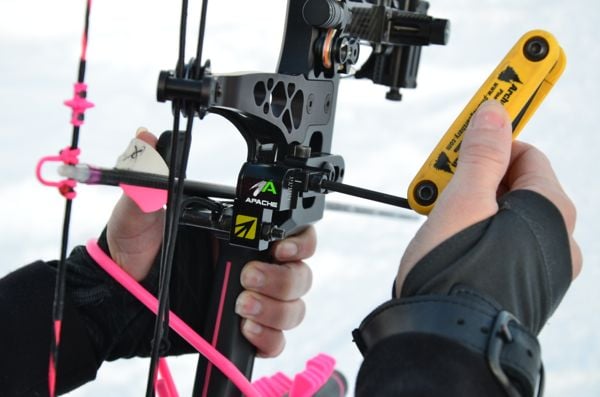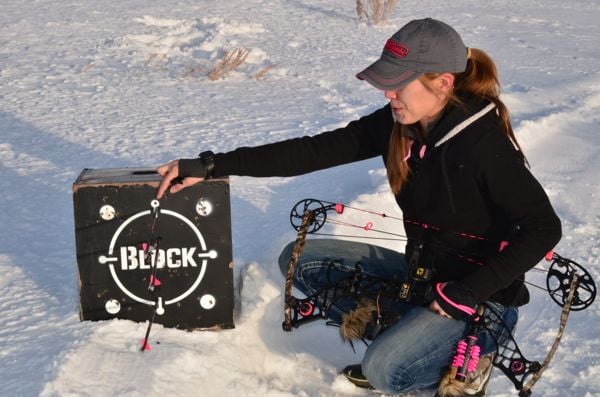LAST UPDATED: May 1st, 2015
Have you ever sighted in your bow at 20 yards, only to find that at longer distances you keep hitting to the left or right? This should be a simple fix. This month, I want to continue helping bowhunters conquer the daunting task of achieving perfect broadhead flight by properly tuning their arrow rest. Last month we visited “broadhead tuning” by adjusting the rest to move the impact point of broadhead tipped arrows to that of field tipped arrows. Walk-back tuning is a simple and effective method to get your arrows back on track.
There are many methods for tunning your arrows. This may be one of the simpliest.
Walk-back tuning is beneficial for target archers as well as bowhunters that shoot both fixed blade and mechanical broadheads. This tuning method can be used in conjunction with the broadhead tuning method I discussed last month. If you are planning on broadhead tuning, try walk-back tuning to save yourself some time. For 3D archers, this will help ascertain that your field tip arrows are flying in the same plane at all distances.
Items List
Walk-back tuning is pretty simple and can take place about anywhere that you have 35-40 yards to shoot. All you need is your bow, release, three fletched arrows with field tips, a target (the bigger, the better) and an allen wrench. If at all possible, make sure your top pin is sighted in. (Get Your Gear Here)
The Concept
The ultimate goal of walk-back tuning is to make sure than your rest is set up correctly, horizontally. For 3D archers, this assures that your arrows will fall in the same vertical line at all distances. If your rest isn’t set correctly left and right, then at longer distances your arrows will tail off in one direction (left) or the other (right). This is also true for hunters that shoot mechanical broadheads.
The Process
Again, for the purpose of this blog, we are going to assume that your arrows are properly spined for your draw length and draw weight.
Walk-back tuning is as simple as it gets when it comes to tuning an arrow rest. Set up your target to where you can shoot it from 20-40 yards. Take a few shots to get warmed up. After you are loosened up, it’s time to begin. It is imperative that you make the best shot you possibly can; if a shot doesn’t feel good, start over.
On your target make a spot that you can see from all distances (this can be a spot already on the target). At 20 yards, shoot an arrow at the mark. If you’re 20 yard pin is sighted in, this should be result in a bulls-eye. Now, step back to where your second pin should be (for most shooters, this would be 30 yards). Using your 20 yard pin (or top pin), yes, the 20 yard pin, shoot an arrow at the same mark. The arrow should hit low of the first arrow. Move to 40 yards (or third pin) and shoot another arrow again using your top pin. This arrow should impact below the second arrow, producing a straight line (see photo below).
This arrow group, shot from 20, 30, and 40 yards will require that you move your arrow rest to the right.
Using your Allen-wrench, make the proper adjustments to the rest and repeat the process until all arrows impact in a straight line.
If your arrows fall in a perfectly vertically line, you are done. If the line of arrows goes to the right or to the left, you have some adjustments to make. For the purposes of this blog, we will assume that your arrows fall in a line to the left. In this case, use your Pine Ridge Allen-wrench and loosed the screw on your rest that allows it to move horizontally. Now, move the rest 1/32 or less to the right, tighten the Allen screw and repeat the shooting process. Adjust the rest after each shooting sequence until your arrows fall in a perfect vertical line.
When you arrows are falling in a perfect line, you are finished. Your goal has been attained. This tuning method will help shooters significantly, specifically those shooting at longer distances.
Tunning your arrows in order to obtain perfect flight shouldn’t require a lot of effort and engineering “know-how”. If you try this method you will quickly find that you don’t need either.

 By
By 







